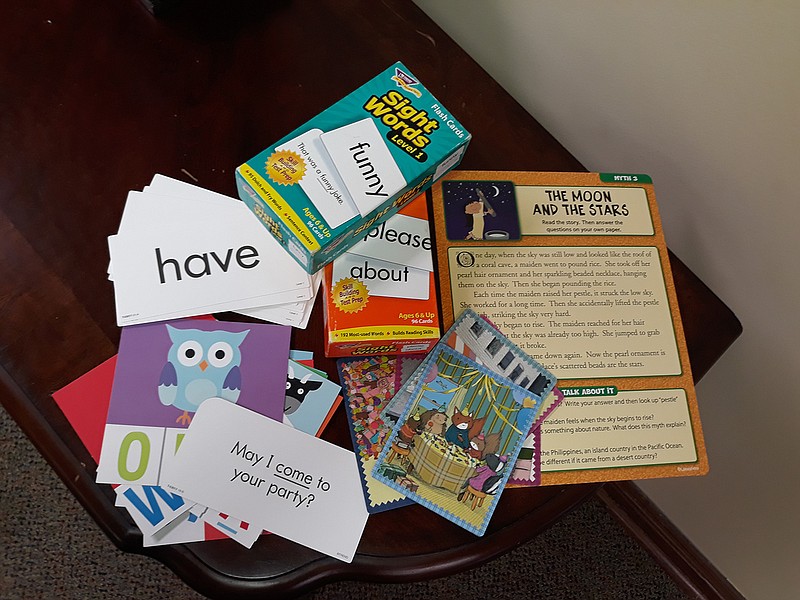One of my favorite ways to study in grade school was flash cards.
They represent tactile and cerebral sensibilities while conveying information. In many ways, they keep us anticipating what's on the other side.
They stack up quite handily in helping students hone skills and strategies.
In fact, flash cards have been a primary pedagogical phenomenon. They're a sure bet in learning methods.
Though it's hard to pinpoint paper flash cards' exact origins, English educator Favell Lee Mortimer is credited by many with formally introducing the 1834 debut of phonics cards entitled Reading Disentangled.
As paper became more widely available through history, flash cards provided a widely accessible, affordable and alternative means to books for learning.
All these years later, flash cards are still an effective and efficient means of learning.
They are quite versatile in form and subjects while fostering solitary or small-group learning.
Alone, you could have the math equation, vocabulary word or chemistry abbreviation before you, mentally conjure the answer and flip the card to see if your guess was correct or incorrect.
An alternative to this is a friend or teacher holding the card before you who could offer some facial clues as to whether you're on the right track.
Flash cards made learning a playful hide-and-guess game. They can be homemade or storebought.
Extremely adaptable, flash cards can span myriad subjects from beginning words to complex legal terms and everything in between.
They can be constructed with pictures, symbols words or numbers.
Sometimes the cards do not have the answers on the back. Instead one literally creates the story for the sweet, storybook-worthy images. That promotes ingenuity, organization and creativity.
And now, with entering information in educational websites like Quizlet and Brainscape, flash cards keep their customizable appeal but go digital.
Still, the physical flash cards resonate with me as I love their portability and the comfort that comes with touching and hearing them.
As a youngster, I was drawn to playing card games like Go Fish and Old Maid.
I never mastered the art of shuffling well. Yet, that rhythmic, smooth sound of the cards slapping against one another to form a random order in the luck of the draw always spoke to me.
Traditionally, playing cards are about numbers, suits and what trumps what.
Numbers, whether on cards or in equations, were never my strong suit.
Therefore, my flash-card foray was quite calculated: mathematics.
Frustrated and trying to build confidence and skills in that math, I spent an inordinate amount of time with those flipping cards.
It's akin to the game of concentration where face down cards are turned up to reveal their number. You'd have to remember the locations of those four aces, 10s or any other value on a playing card.
The nicest thing about flash cards was how they included everything you needed-the problem and the answer.
After conquering some math challenges with flash cards, my love of them multiplied when we got to my favorite subject.
A lifelong lover of words and language, the English flash cards were my rapture and solace.
So, whether for math or English, I was all-in when it came to flash cards.
Many others did not share my exuberance for vocabulary cards. But a few did.
A dreaded battle ax, militant, senior English teacher at my district's high school was notorious for her 1,000 vocabulary words Vis Ed blue box edition of flash cards.
Even as an elementary student as I watched the seniors go past me on the the school-bus aisle. I coveted those boxed sets of cards slung between their notebook and books and their hip and their arm.
Sometimes, they practiced their assigned vocabulary words from the box. I sat as far back on the bus as I could to eavesdrop.
Occasionally, one of the pretty high school girls whom I idolized let me share a bus seat with her and peruse her set of vocabulary cards. I was, well- to use some of those vocabulary words - euphoric, awestruck. I assisted her in studying those cards.
In my wonkish, bookworm mode, it was like being given the keys to the kingdom and finding treasure.
What I thought of as treasure, however, brought most of those senior students displeasure.
Gloom, despair and agony a la "Hee Haw" twas the way most senior students referred to those blasted vocabulary cards.
By the time I got to high school, I had my own set of blue box Vis Ed vocabulary flash cards. Sadly, they were destroyed and I've never replaced them.
As, I recall the word "sidle" was card 77. The word means to move sideways in a secretive manner. My take on the word was in the romantic realm. I always saw it as a dating couple sliding close together on a vehicle's bench seat. Or when a guy does that fake stretch-and-yawn thing at the movies to put his arm around a girl.
As I survey the sets online now that look similar to the ones I had, I hesitate to make a purchase as there are no guarantees all 1,000 cards are in the set. And I can only imagine the response I would get if I contacted the seller to ask whether the card 77 "sidle" was in the set.
That's a turn I don't want to take.
As long as I have my personal flashbacks with my flash cards, I'll be happy.

